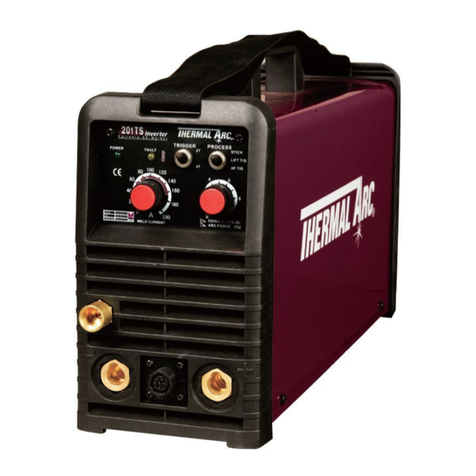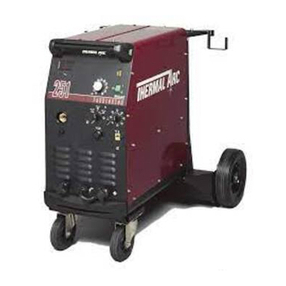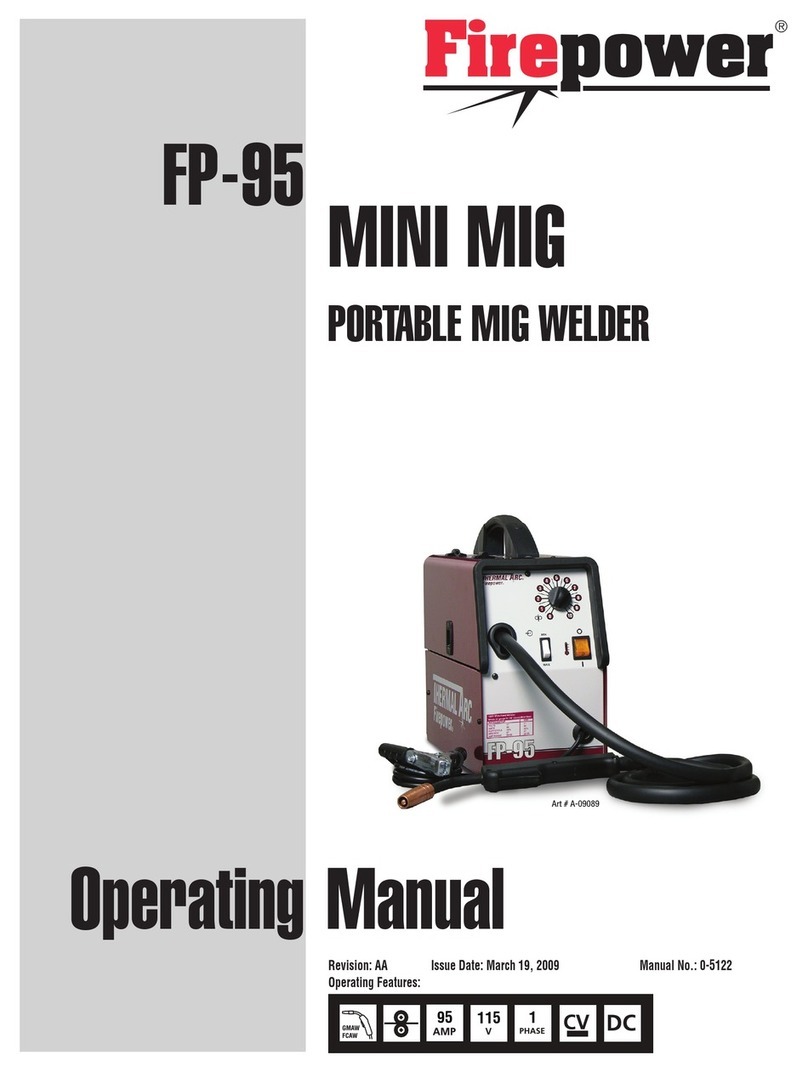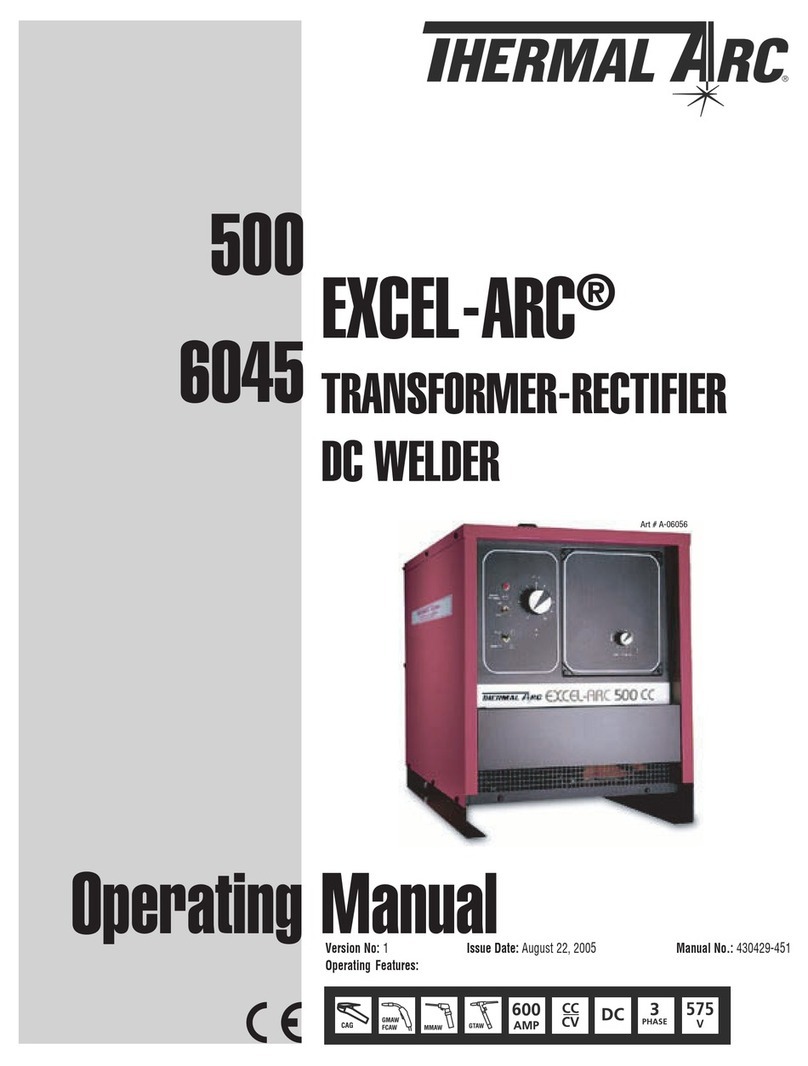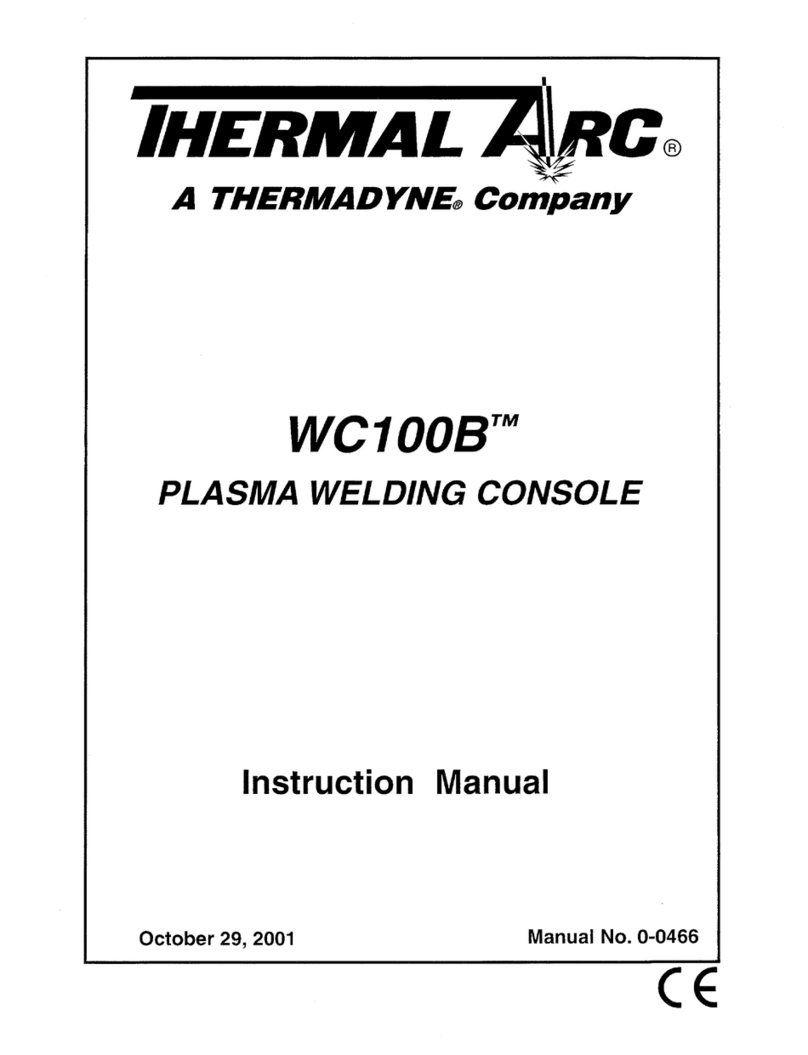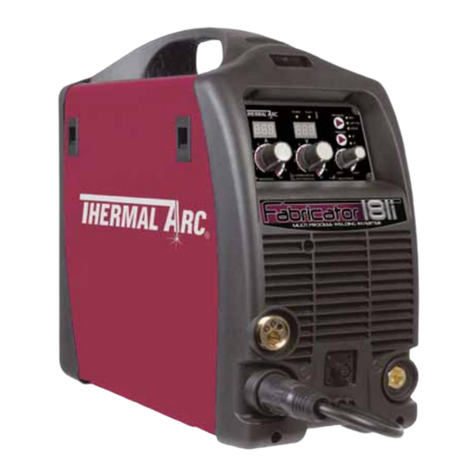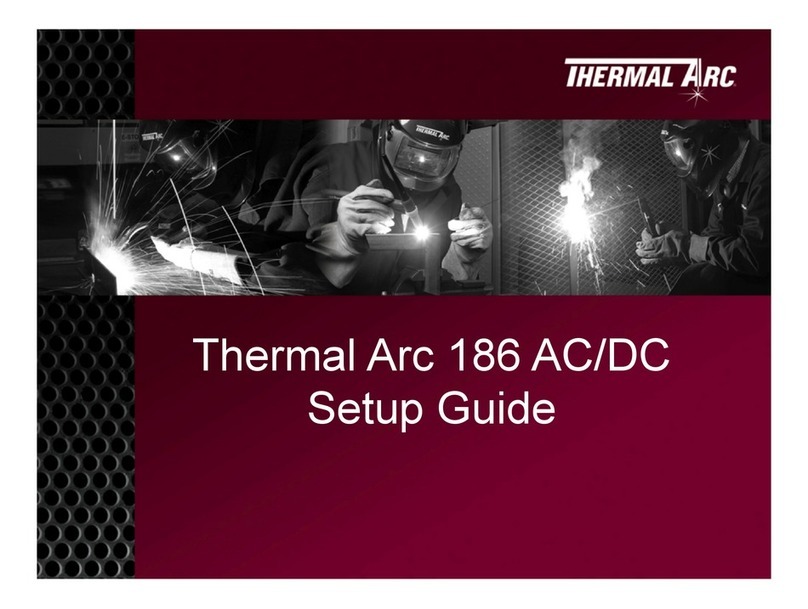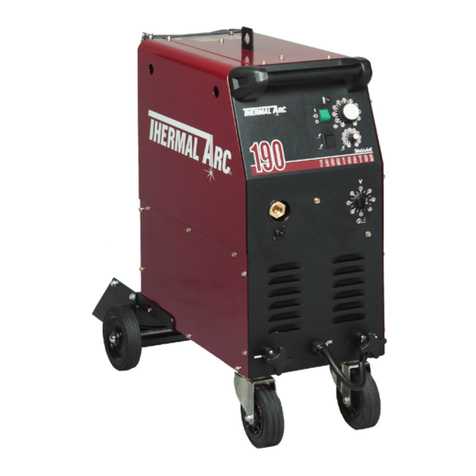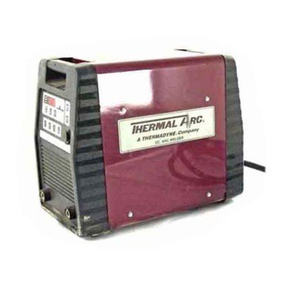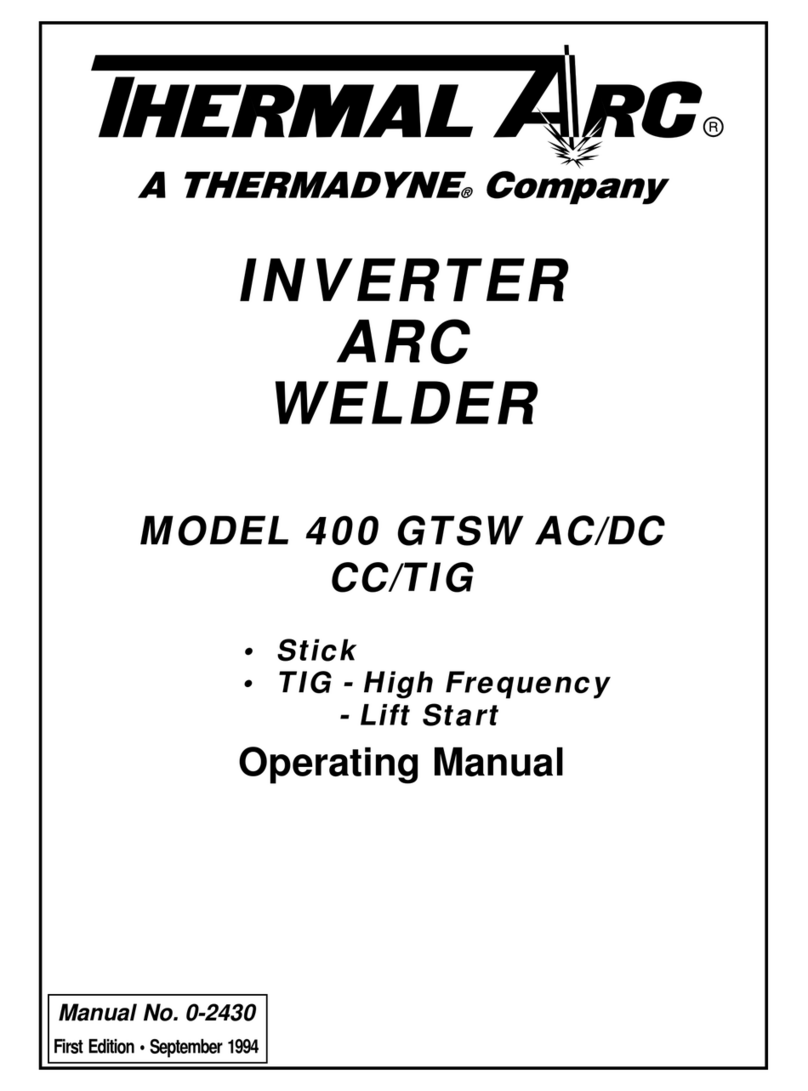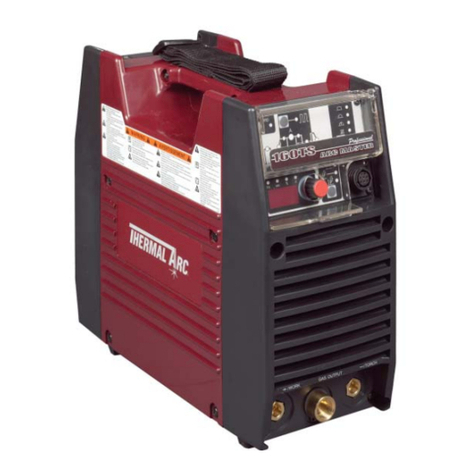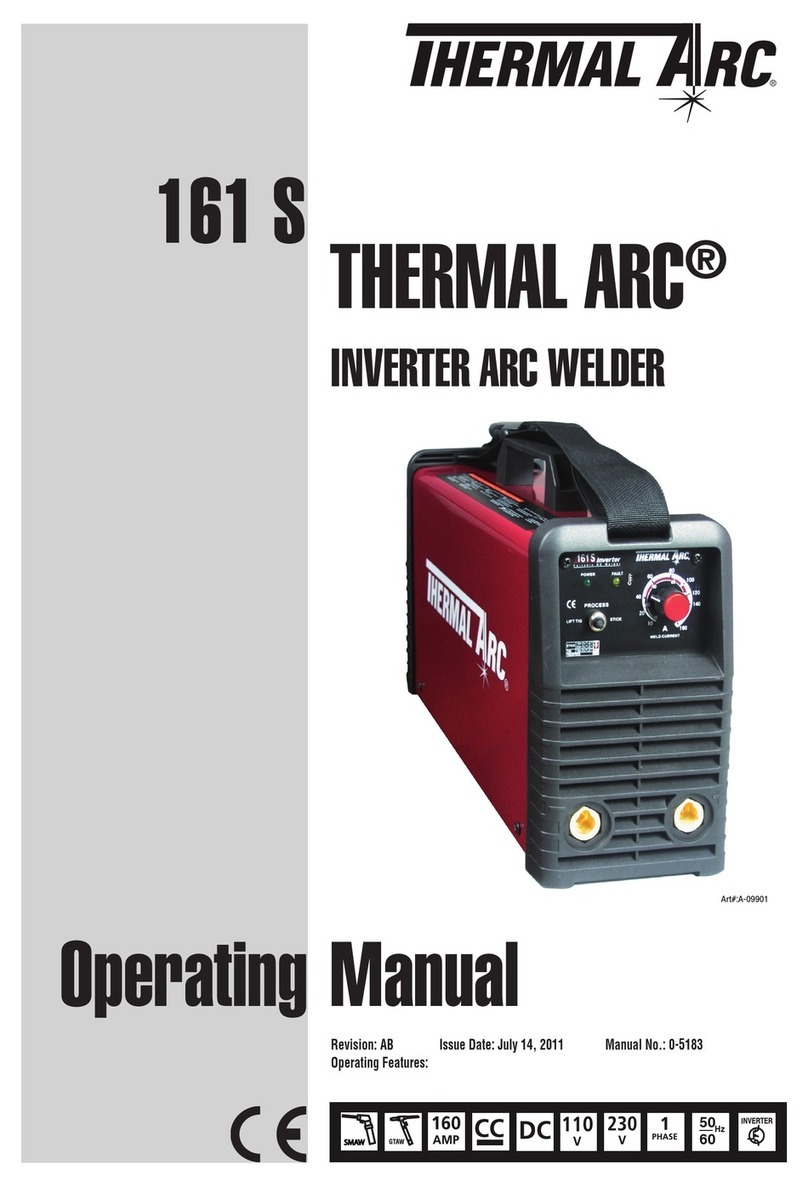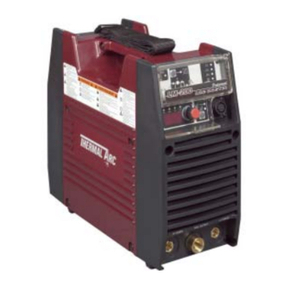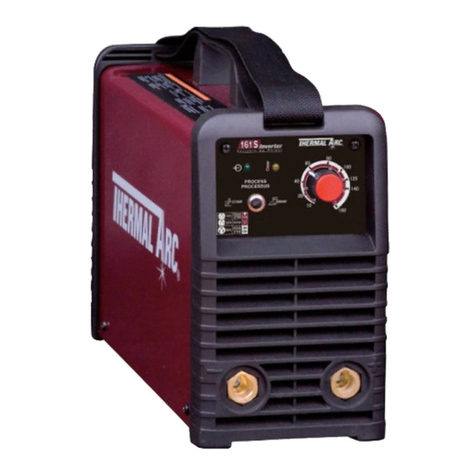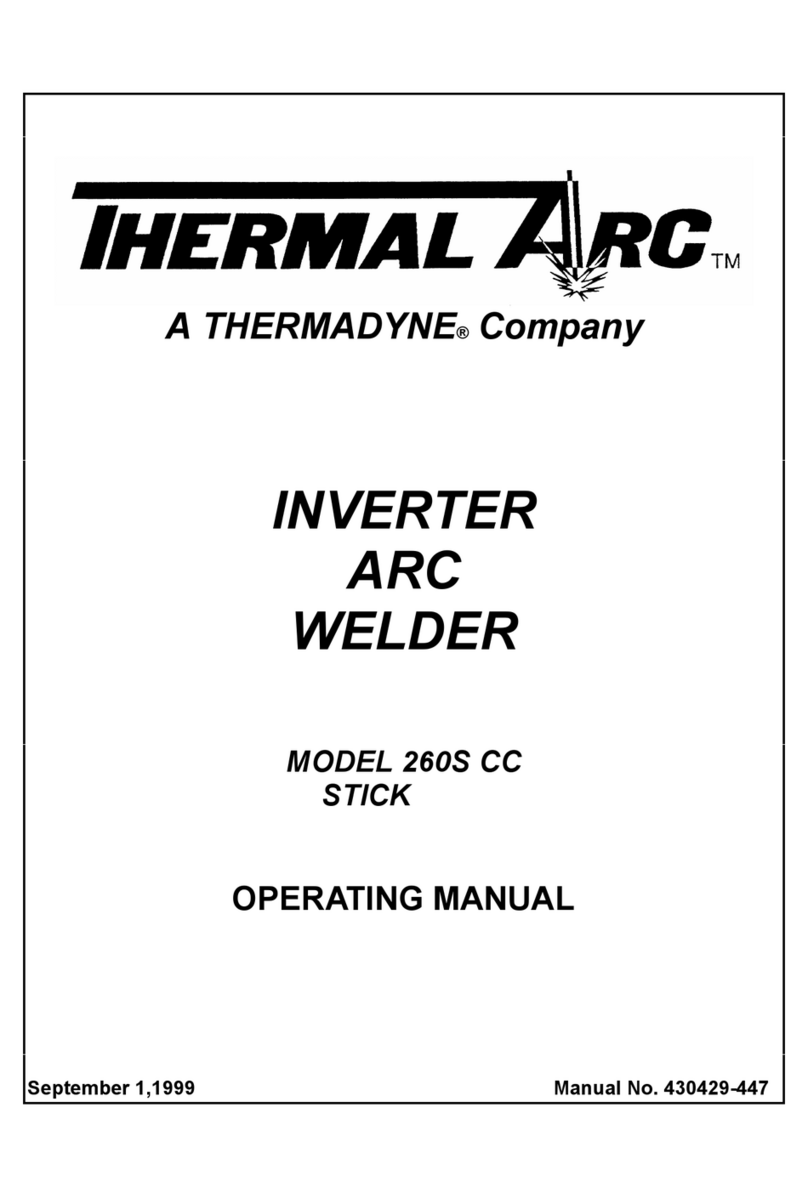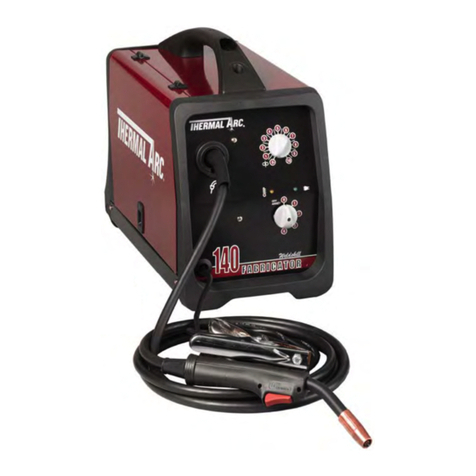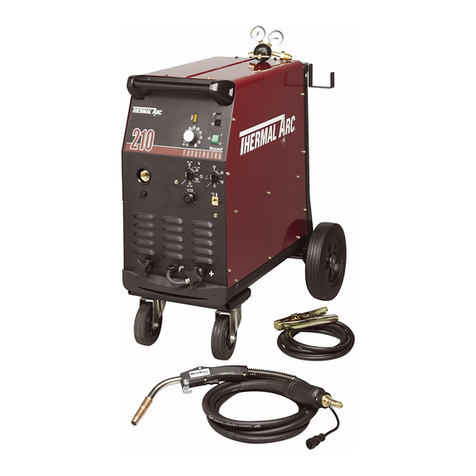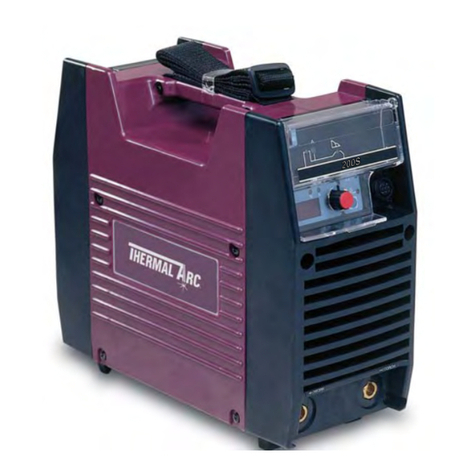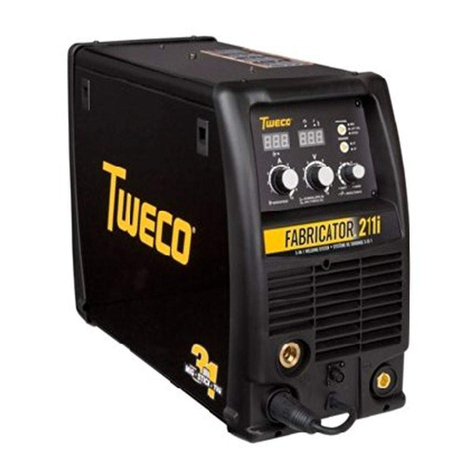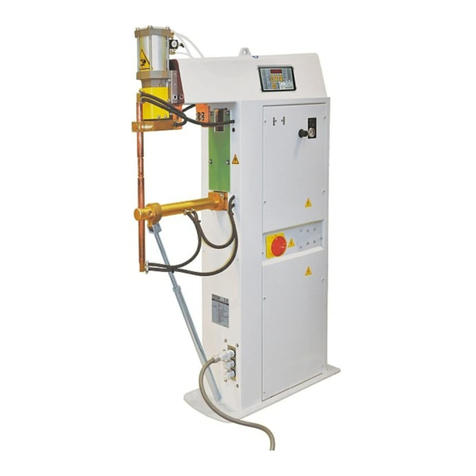
ARC WELDING SAFETY INSTRUCTIONS AND WARNINGS
Instruction 830001
May 8, 1996 2-3
STEAM AND PRESSURIZED HOT
COOLANT can burn face, eyes, and
skin.
Thecoolantintheradiator can be very hot and under
pressure.
1. Do not remove radiator cap when engine is hot. Allow engine to
cool.
2. Wear gloves and put a rag over cap area when removing cap.
3. Allow pressure to escape before completely removing cap.
PRINCIPAL SAFETY STANDARDS
Safety in Welding and Cutting, ANSI StandardZ49.1, fromAmerican
Welding Society, 550 N.W. LeJeune Rd., Miami, FL 33126.
SafetyandHealthStandards,OSHA29CFR1910, from Superinten-
dent of Documents, U.S. Government Printing Office, Washington,
D.C. 20402.
Recommended Safe Practices for the Preparation for Welding and
CuttingofContainersThatHaveHeldHazardousSubstances, Amer-
ican Welding Society Standard AWS F4.1, from American Welding
Society, 550 N.W. LeJeune Rd., Miami, FL 33126.
NationalElectricalCode, NFPA Standard 70, from National Fire Pro-
tection Association, Batterymarch Park, Quincy, MA 02269.
Safe Handling of Compressed Gases in Cylinders, CGA Pamphlet
P-1, from CompressedGasAssociation, 1235 Jefferson Davis High-
way, Suite 501, Arlington, VA 22202.
CodeforSafety inWeldingandCutting,CSAStandardW117.2,from
Canadian Standards Association, Standards Sales, 178 Rexdale
Boulevard, Rexdale, Ontario, Canada M9W 1R3.
SafePracticesforOccupationandEducationalEyeandFaceProtec
-
tion, ANSI Standard Z87.1, from American National Standards Insti-
tute, 1430 Broadway, New York, NY 10018.
Cutting and Welding Processes, NFPA Standard 51B, from National
FireProtectionAssociation,BatterymarchPark,Quincy,MA02269.
SPARKS can cause BATTERY GASES
TO EXPLODE; BATTERY ACID can
burn eyes and skin.
Batteries contain acid and generate explosive
gases.
1. Always wear a face shield when working on a battery.
2. Stop engine before disconnecting or connecting battery cables.
3. Do not allow tools to cause sparks when working on a battery.
4. Do not use welder to charge batteries or jump start vehicles.
MOVING PARTS can cause injury.
Moving parts, such as fans, rotors, and belts can cut
fingers and hands and catch loose clothing.
1. Keep all doors, panels, covers, and guards closed and securely
in place.
2. Stop engine before installing or connecting unit.
3. Have only qualified people remove guards or covers for mainte
-
nance and troubleshooting as necessary.
4. Toprevent accidental startingduringservicing,disconnectnega-
tive (-) battery cable from battery.
5. Keep hands, hair, loose clothing, and tools away from moving
parts.
6. Reinstall panels or guards and close doors when servicing is fin-
ished and before starting engine.
ENGINE FUEL can cause fire or
explosion.
Engine fuel is highly flammable.
1. Stop engine before checking or adding fuel.
2. Donotaddfuelwhilesmokingorifunitisnearanysparksoropen
flames.
3. Allow engine to cool before fueling. If possible, check and add
fuel to cold engine before beginning job.
4. Do not overfill tank — allow room for fuel to expand.
NOTE: Considerations About Welding And The Effects Of Low Frequency Electric And Magnetic Fields
ThefollowingisaquotationfromtheGeneralConclusionsSection oftheU.S.Congress,OfficeofTechnologyAssessment, BiologicalEffects of
Power Frequency Electric & Magnetic Fields — Background Paper, OTA-BP-E-63 (Washington, DC: U.S. Government Printing Office, May
1989):“...thereisnowaverylargevolumeofscientific findingsbasedonexperiments atthecellularlevelandfromstudieswithanimals and peo-
ple which clearly establish that low frequencymagnetic fields can interact with, and produce changes in, biologicalsystems. While most of this
workisofveryhighquality,theresultsarecomplex.Currentscientificunderstandingdoesnotyetallowustointerprettheevidenceinasingle co-
herentframework.Evenmorefrustrating,itdoesnotyetallowustodrawdefiniteconclus ionsaboutquestionsofpossibleriskortoofferclearsci-
ence-based advice on strategies to minimize or avoid potential risks.”
To reduce magnetic fields in the workplace, use the following procedures:
About Pacemakers:
The above procedures are among those also normally recommended for pacemaker wearers. Consult your doctor for complete information.
1. Keep cables close together by twisting or taping them.
2. Arrange cables to one side and away from the operator.
3. Do not coil or drape cables around the body.
4. Keep welding power source and cables as far away from body as
practical.
WARNING: This product, when used for weldingorcutting, producesfumesorgaseswhich containchemicals knowntothe Stateof
California to cause birth defects and, in some cases, cancer. (California Health & Safety Code Sec. 25249.5 et seq.)

